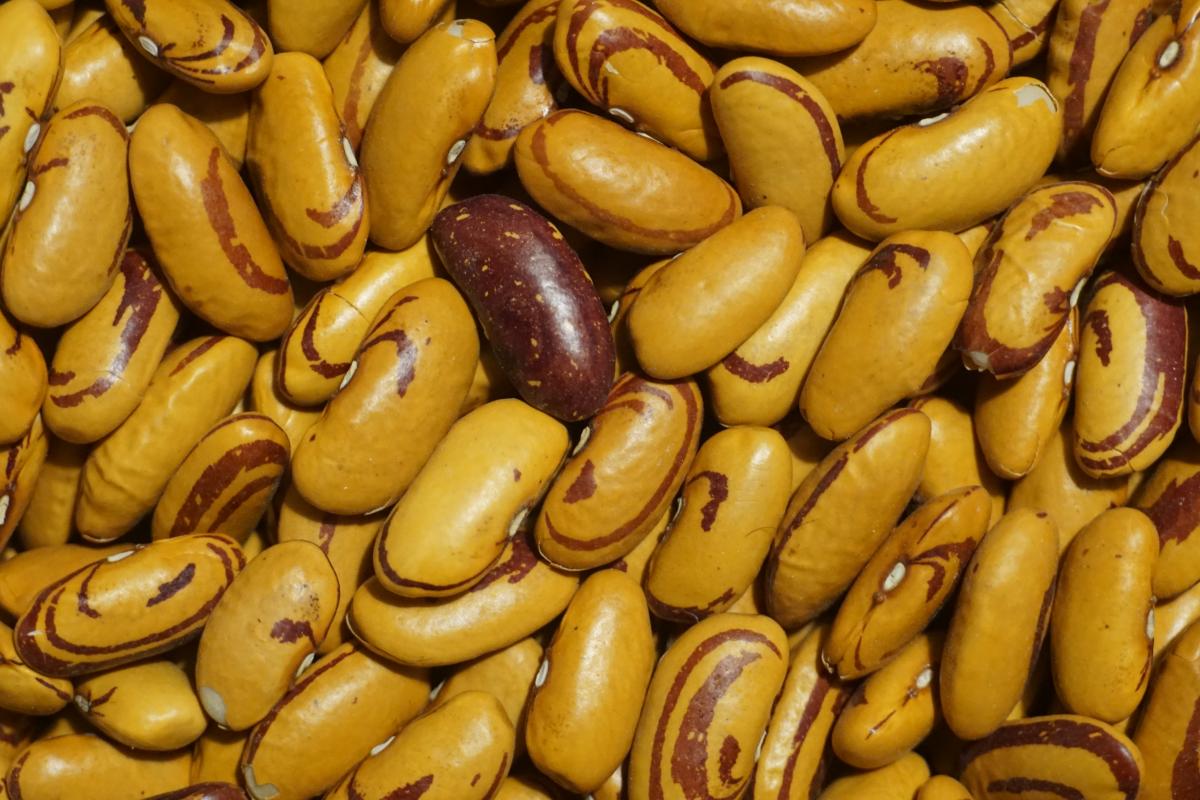A nutty, rich-flavored bean which holds its shape once cooked, but will fall apart upon further cooking. Suited for vegetarian taco stuffing, stews, refried beans, bean patties, and other bean mashes.
BASIC COOKING RECOMMENDATIONS:
First, know that one cup of beans cooks up to the volume of three cups of beans. One pound of beans is approximately two cups, so one lb would yield a six cup pot of beans.
At its most basic, cooking beans is about simmering them until they are soft. Soaking them speeds up that process and broth adds a punch of flavors. From there, one can do some fine-tuning and throw in some variables:
1. To soak, or not.
I have definitely soaked my fair share of beans. The process is that of soaking them overnight in water, covering them by as much water as they fill the pot deep. The next morning, first thing, strain the beans, discarding the soak water, and rinse the beans. The thought is to wash out the phytic acids which might be causing gas in some people.
There is conflicting scientific evidence as to whether it is beneficial to soak beans, and that one might actually be washing out vitamins and flavors.
My best thinking is not to fret it. If you want to reduce the cooking time, which is for sure going to happen, go ahead, but try not to soak for more than 6 hours. If you want to cook beans and do not have any pre-soaked, go ahead and simply plan on a longer cooking time. But you are in luck! Our beans rarely make it over one year old, which is REAL fresh for a bean. Fresh beans, younger than two years, have a reduced cooking time already. Variety and age in months will affect the cooking time. Our beans will range between 30 minutes (for soaked) and 3 hours (for un-soaked).
In conclusion, more important than soaking, is sourcing!
2. Prep with mirepoix.
If desired, get a classic mirepoix going. This consists of onion, garlic, celery, diced carrot, pepper flakes, and broken bay leaves in a fat, such as local sunflower oil. Heat until aromatic or translucently luscious.
3. Cook beans.
Once aromatic, add beans and cover with at least two inches of water/broth. Bring to a boil and leave it there for about 10 minutes to let the beans know who’s boss. Then set to simmer, adding pre-heated water if and as necessary to keep the beans covered throughout cooking. There is some thinking that adding cold water will cause the beans to harden. Expect our beans to take 30 minutes to 1.5 hours to cook.
4. Salt, fat (got it), acid, heat (got it).
There is a cookbook by the title “Salt, Fat, Acid, Heat”, summing up all it takes to create flavor. So far, you got the fat and the heat, now, when the beans are soft through and through, is time to add salt and acids, such as tomatoes, lime or vinegar. Not before, as they may cause the beans to rebel. Let the now salted/acidified beans sit in the broth for at least 10 minutes to take it all in.
Voila! Beans done! Do not discard the broth; use any extra for soup, dirty rice, bread, and more!


